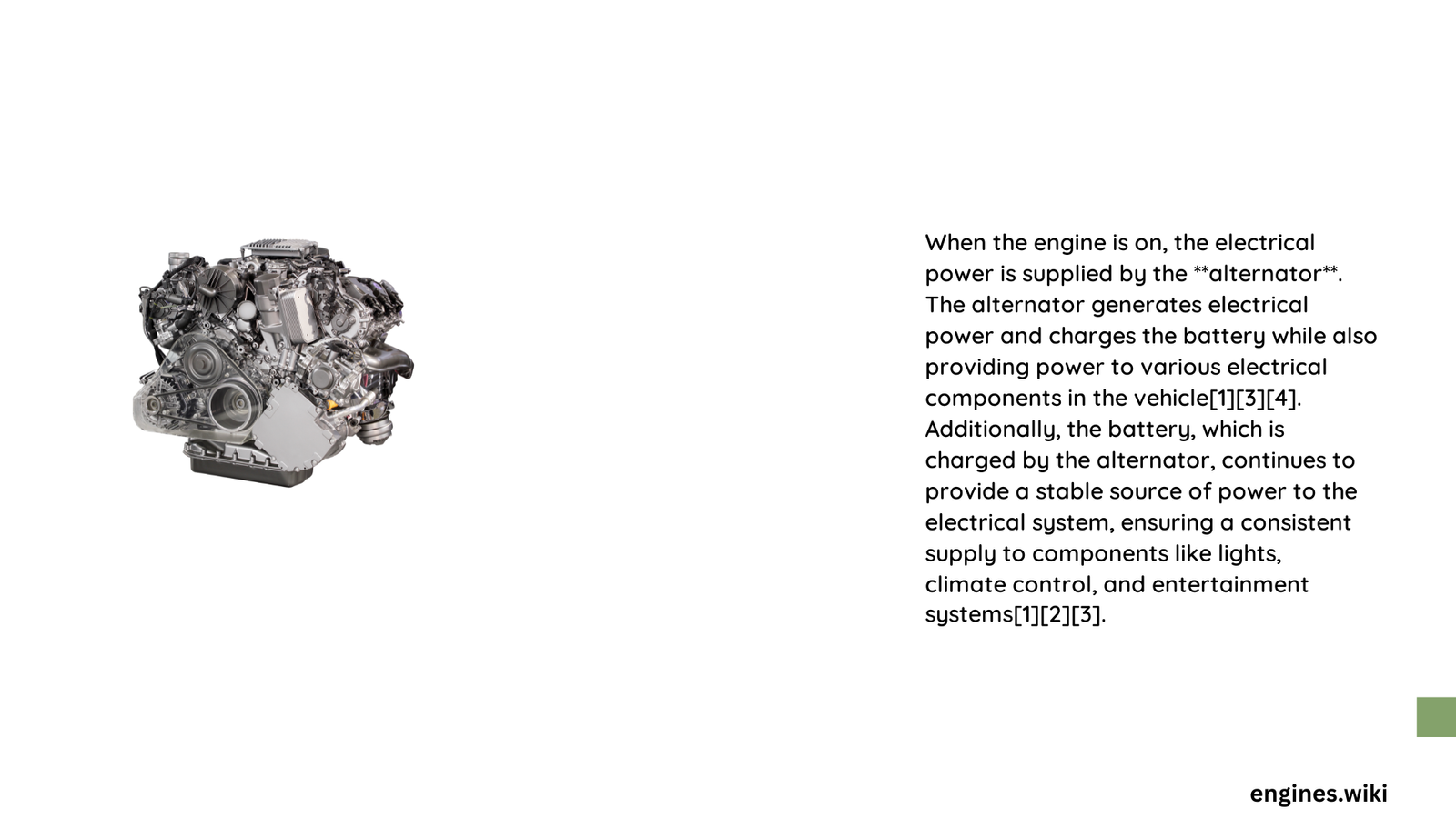When a vehicle’s engine is operational, a sophisticated electrical ecosystem springs into action, primarily driven by the alternator. This critical component transforms mechanical energy into electrical power, simultaneously charging the battery and powering all electrical systems. The alternator, working in concert with the battery and voltage regulator, ensures a stable and consistent electrical supply that meets the dynamic demands of modern vehicles.
What Generates Electrical Power During Engine Operation?
How Does the Alternator Produce Electrical Power?
The alternator serves as the primary electrical power generator when an engine runs. It converts mechanical energy from the engine’s crankshaft into electrical energy through a complex electromagnetic process.
Key Alternator Specifications
| Component | Specification | Typical Range |
|---|---|---|
| Voltage Output | DC Voltage | 12-14.4 V |
| Amperage | Current Capacity | 100-250 Amps |
| Operational Speed | RPM Range | 1000-6000 RPM |
What Role Does the Battery Play in Electrical Power Supply?
While the alternator generates power, the battery plays a crucial supporting role:
- Voltage Stabilization: Acts as an electrical buffer
- Power Backup: Provides emergency electrical support
- Charge Maintenance: Receives continuous charging from alternator
How Does the Voltage Regulator Control Electrical Power?
The voltage regulator acts as a sophisticated electrical management system:
- Monitors system voltage continuously
- Prevents overcharging or undercharging
- Maintains consistent electrical output
- Protects electrical components from voltage fluctuations
What Happens During Different Electrical Load Conditions?
Electrical power supply dynamically adjusts based on vehicle requirements:
- Low Load (Idle): Alternator produces minimal power
- Medium Load (Normal Driving): Consistent power generation
- High Load (Multiple Systems Active): Maximum power output
Technical Insights into Electrical Power Generation
Modern alternators utilize advanced technologies:
- Stator Winding Design: Determines power generation efficiency
- Diode Rectifier Assembly: Converts AC to DC power
- Electromagnetic Field Manipulation: Enables precise power control
Potential Challenges in Electrical Power Supply
Potential issues can disrupt electrical power generation:
- Alternator failure
- Battery degradation
- Voltage regulator malfunction
- Wiring connection problems
Maintenance Recommendations
To ensure consistent electrical power:
- Regular battery testing
- Alternator output verification
- Periodic voltage regulator inspection
- Clean electrical connections
Advanced Electrical System Considerations
Contemporary vehicles incorporate increasingly complex electrical systems:
- Higher amperage requirements
- More sophisticated power management
- Integration with electronic control units
- Enhanced efficiency technologies
Conclusion
The vehicle’s electrical power supply represents a sophisticated, interconnected system where the alternator, battery, and voltage regulator work harmoniously to meet diverse electrical demands.

